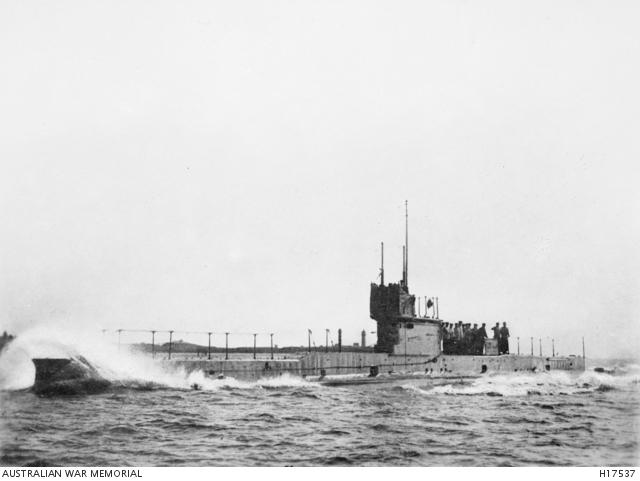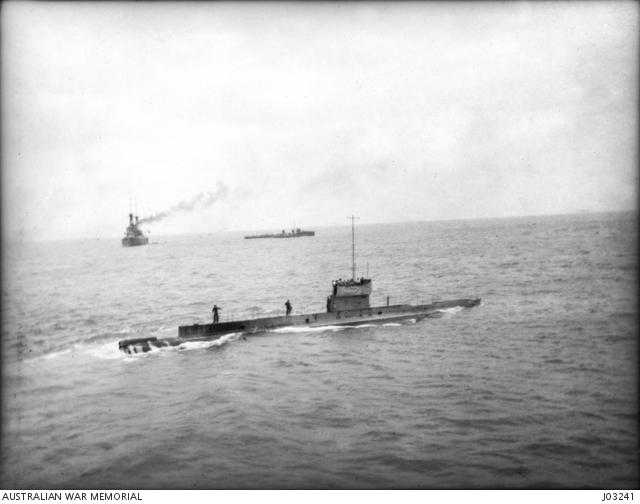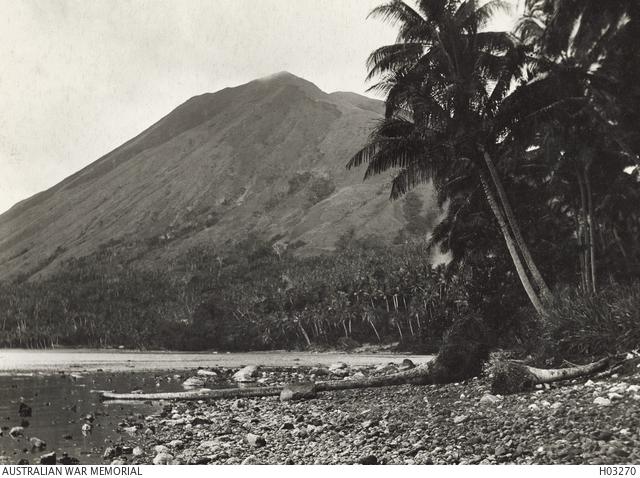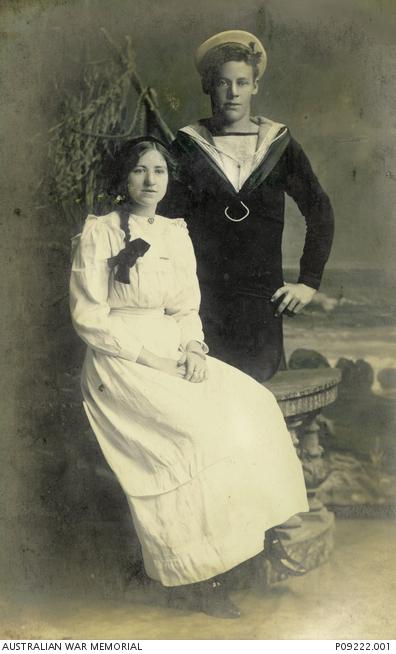HMAS AE1

Royal Australian Navy submarine HMAS AE1 at sea in 1914.
In 1914 the Australian government took possession of two new submarines, HMAS AE1 and HMAS AE2, from Great Britain for just over £105,000 each.
These submarines were experimental, top-secret craft. At just over 54 metres long and less than seven metres wide, they could travel at around 15 knots surfaced and 9 knots submerged. On 7 March 1914 AE1 and AE2 began an epic journey of almost 21,000 kilometres from England to Australia. The submarines frequently broke down and needed to be repaired; they had to be towed by naval ships for one-third of the distance owing to malfunctions; and they made many stops in ports, including at Gibraltar, Malta, Colombo, and Djakarta.
The interior of AE1 was filled with pipes, levers, and torpedoes¹, and conditions for the crew were cramped and uncomfortable. The supply of fresh air was limited and it got extremely hot. When temperatures reached 38 degrees Celsius there was an attempt to reduce the heat by painting the submarine white.
AE1 and AE2 finally sailed into Sydney Harbour on 24 May 1914. They had completed the longest submarine voyage ever undertaken. However, the crew and vessels did not have much time for rest and repair: in August the First World War broke out, and they were called up for duty.
The submarines were sent as part of the Australian Naval and Military Expeditionary Force (ANMEF) to capture German possessions in the western Pacific and German New Guinea. Following the capture of Rabaul, on 14 September 1914 AE1 and HMAS Parramatta left Blanche Bay, New Britain, to patrol around Cape Gazelle. The vessels kept in sight of each other and exchanged visual signals until around 3.30 pm, when a mist descended and the AE1 disappeared. The Parramatta returned to the AE1’s last known position and spent the next two days searching for it, with the help of three other naval ships. No signs of the AE1 or its 35 crew members were ever found.
Theories speculating as to what had happened to the AE1 soon spread:
Whether she was actually sunk by a shot from the enemy, whether an unseen pinnacle of coral ripped open her plates, or the pumps refused to do their work in bringing the vessel again to the surface after a dive, will probably remain forever unknown.²
Further searches of the area were conducted in the 1970s, 1990s and 2000s, each time to no avail.
¹ G. Seal, Finding the lost submarine: the mystery of AE1, Submarine Institute of Australia, 2008, p. 3:
² Seal, Finding the lost submarine: the mystery of AE1, Submarine Institute of Australia, 2008, p. 10:
Questions and activities
- Read John Albert Marsland and John Joseph Moloney's case studies and answer the questions.
- How much would the £105,000 spent on AE1 and AE2 be worth in modern Australian currency? Do you think the decision to spend so much money on experimental submarines would have been popular with Australians? Why or why not?
- Why would submarines be useful in war? What are some of the roles of submarines?
- What would it have been like for the sailors travelling on the submarines from England to Australia? What would have been difficult? What would have been exciting? Imagine you were one of these sailors. Describe your experiences in a letter home.
- What units were involved in the Australian Naval and Military Expeditionary Force? What was the ANMEF’s job?

HMAS AE1 with HMAS Australia and HMAS Yarra at a rendezvous off Rossel Island in September 1914, photographed from the bridge of HMAS Encounter.

HMAS AE1 was lost with all crew near the entrance to Blanche Bay in Nodup, New Britain. Locate this area on a map. Approximately how far is it from Australia?.
The young man in the photograph below is Jack Jarman. He enlisted in the Royal Australian Navy in July 1911 and became a crewmember of its first submarine, AE1, in February 1914. Able Seaman Jarman was 21 years of age when he and the rest of the submarine’s crew were lost.

Able Seaman Jack Jarman of St. Kilda, Victoria, and a young woman believed to be his sister.
- Imagine you were the woman in this photograph, believed to be Jack’s sister. How would you feel on hearing of the disappearance of the AE1? What would you want to know? Write a journal entry describing your feelings.
- Research and write the story of one of the crew of the AE1. Some names and helpful links are listed below:
Able Seaman James Benjamin Thomas
http://recordsearch.naa.gov.au/scripts/Imagine.asp?B=4521868
http://www.awm.gov.au/people/rolls/R1713360
Engine Room Artificer Third Class John Messenger
http://recordsearch.naa.gov.au/scripts/Imagine.asp?B=4531078
http://www.awm.gov.au/people/rolls/R1713796
Engine Room Artificer Third Class James Alexander Fettes
http://recordsearch.naa.gov.au/scripts/Imagine.asp?B=4548834
http://www.awm.gov.au/people/rolls/R1713998
General links
http://www.awm.gov.au/blog/2014/02/20/dig-deeper-tragic-mystery-ae1
http://www.navy.gov.au/hmas-ae1
References
John Moloney’s medals, Australian War Memorial: /collection/REL39990.001
Graham Seal, Finding the lost submarine: the mystery of AE1, Submarine Institute of Australia, see:
“The disaster to the Australian submarine AE1—members of the crew.” The Argus, 23 September 1914, p. 13. See: http://nla.gov.au/nla.news-article10807779.
National Archives of Australia, service records, John Joseph Moloney: http://recordsearch.naa.gov.au/scripts/Imagine.asp?B=4530030.
Useful Websites
http://www.awm.gov.au
http://trove.nla.gov.au
http://www.submarineinstitute.com/submarines-in-australia/world-war-i.html
http://www.rba.gov.au/calculator/annualPreDecimal.html